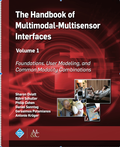Cited By
View all- Ahmad ISharma SSingh RGehlot AGupta LThakur APriyadarshi NTwala B(2024)Inclusive learning using industry 4.0 technologies: addressing student diversity in modern educationCogent Education10.1080/2331186X.2024.233023511:1Online publication date: 23-Mar-2024
- Zhou QSuraworachet WCukurova M(2024)Detecting non-verbal speech and gaze behaviours with multimodal data and computer vision to interpret effective collaborative learning interactionsEducation and Information Technologies10.1007/s10639-023-12315-129:1(1071-1098)Online publication date: 1-Jan-2024
- Kuznetsov KBarz MSonntag D(2023)Detection of contract cheating in pen-and-paper exams through the analysis of handwriting styleCompanion Publication of the 25th International Conference on Multimodal Interaction10.1145/3610661.3617162(26-30)Online publication date: 9-Oct-2023
- Show More Cited By




